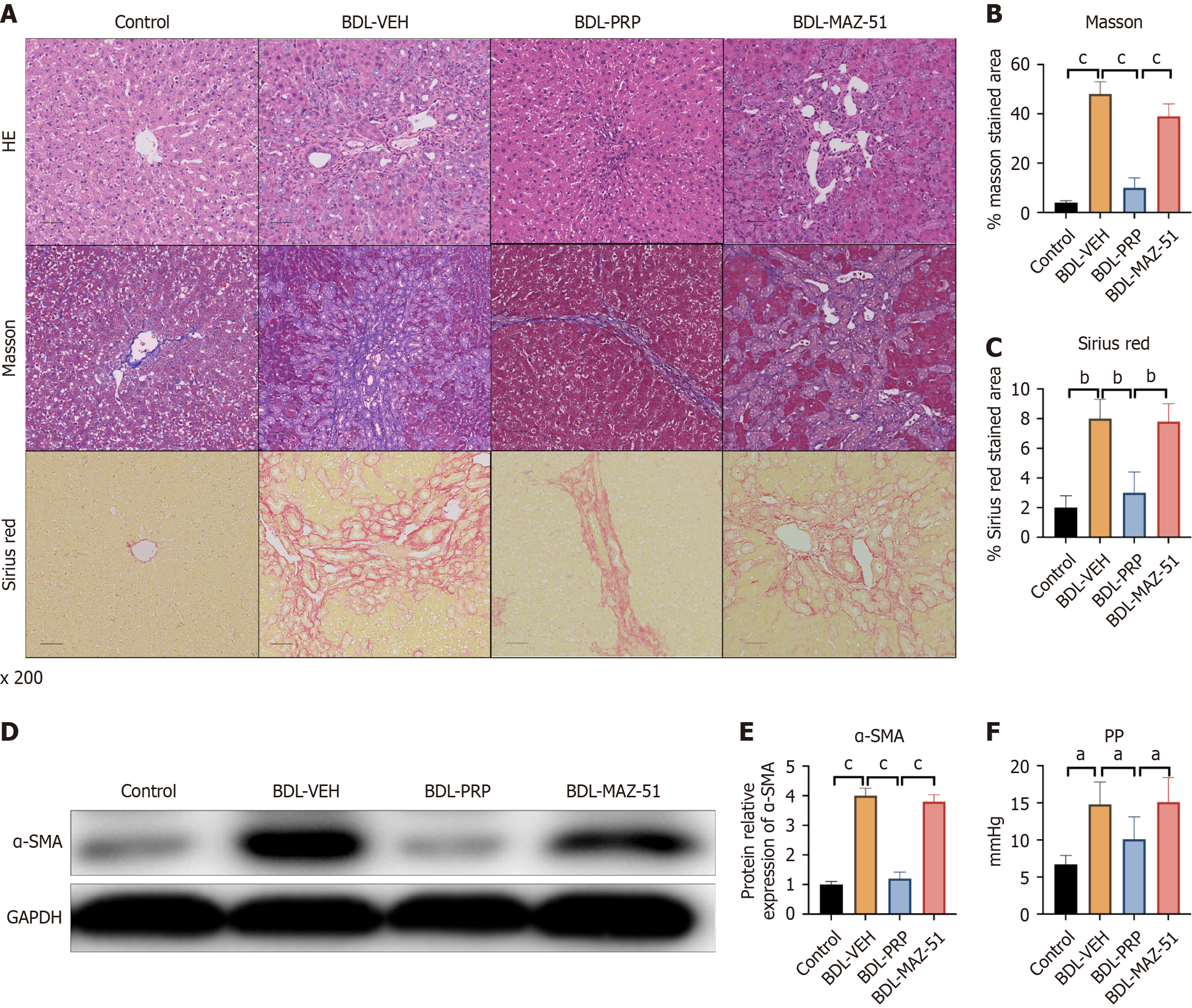Copyright
©The Author(s) 2025.
World J Gastroenterol. Mar 14, 2025; 31(10): 100194
Published online Mar 14, 2025. doi: 10.3748/wjg.v31.i10.100194
Published online Mar 14, 2025. doi: 10.3748/wjg.v31.i10.100194
Figure 6 Inhibition of vascular endothelial growth factor C/vascular endothelial growth factor receptor 3 reversed the amelioration of liver fibrosis and portal hypertension in platelet-rich plasma-induced platelets.
A: Representative immunohistochemistry images of hematoxylin and eosin (H&E), Masson’s trichrome, and Sirius red staining in liver samples from the different groups; Quantitative analysis of B: Masson’s trichrome; C: Sirius Red; D: Protein expression of alpha smooth muscle actin (α-SMA) in the different groups; Quantitative analysis of E: α-SMA staining; F: The levels of portal pressure were also measured. The data represent the mean ± SD. aP < 0.05. bP < 0.01. cP < 0.001. BDL: Bile duct ligation; GAPDH: Glyceraldehyde-3-phosphate dehydrogenase; PP: Portal pressure; PRP: Platelet-rich plasma; VEH: Vehicle.
- Citation: Chen M, Zhao JB, Wu GB, Wu ZH, Luo GQ, Zhao ZF, Zhang CH, Lin JY, Li HJ, Qi XL, Huo HZ, Tuersun A, Fan Q, Zheng L, Luo M. Platelet activation relieves liver portal hypertension via the lymphatic system though the classical vascular endothelial growth factor receptor 3 signaling pathway. World J Gastroenterol 2025; 31(10): 100194
- URL: https://www.wjgnet.com/1007-9327/full/v31/i10/100194.htm
- DOI: https://dx.doi.org/10.3748/wjg.v31.i10.100194









